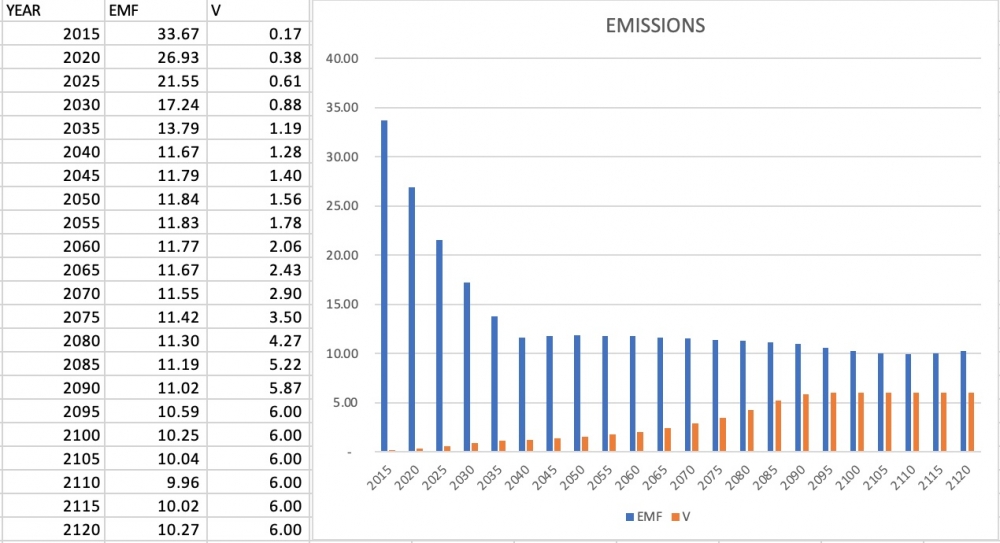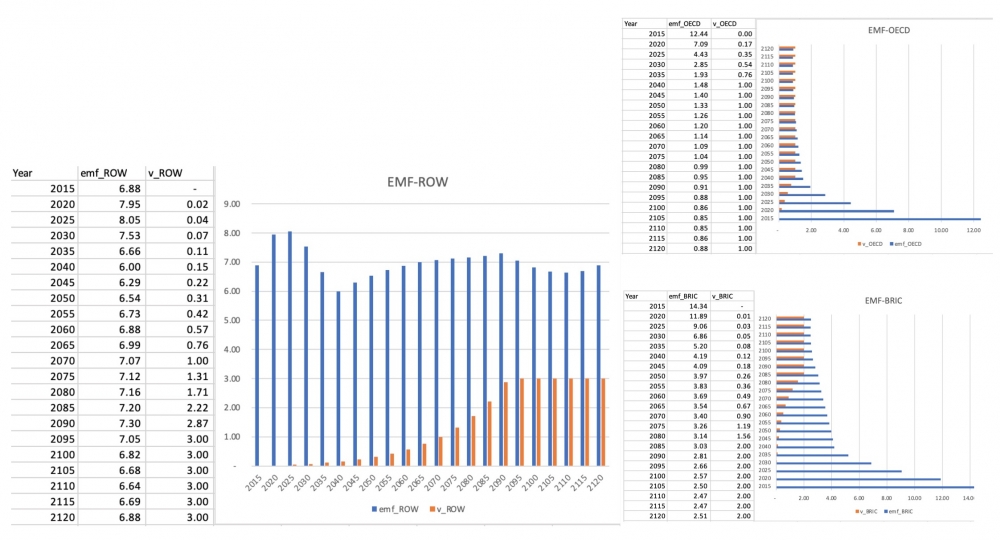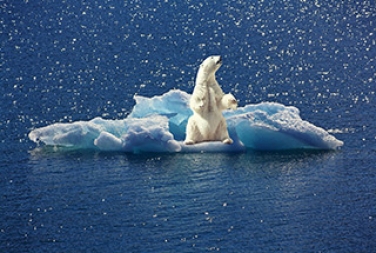SORMAC-23
Limit the temperature increase to 2 degrees, with optimal use of direct capture of CO2 in the atmosphere (DAC)
Impact on growth
In this scenario, a constraint is imposed on the rise in the average atmospheric surface temperature (AAST). A technology for the direct capture of CO2 from the atmosphere is gradually becoming available. It is used in such a way as to maximise the sum of the utilities derived from consumption in the three coalitions.
Trajectory of temperature increase
We see that the temperature increase stabilizes at 2 degrees C over a 100-year time horizon.
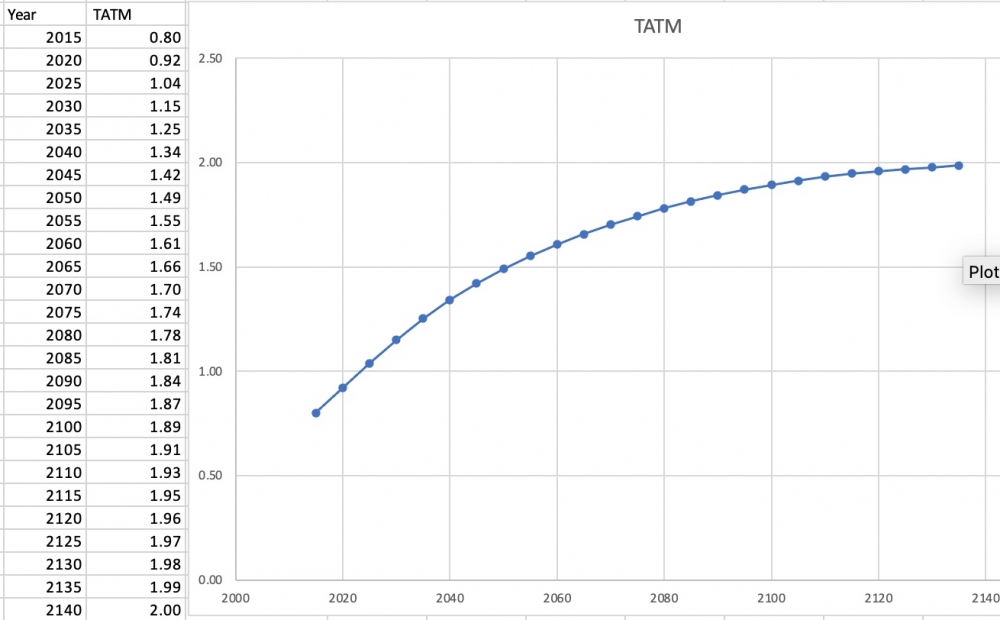
OUTPUT
In order to respect this 2-degree limit on temperature increase, the OECD countries must immediately commit to a more or less constant production level; BRIC countries develop slowly. Only ROW world would experience production growth over most of the horizon.
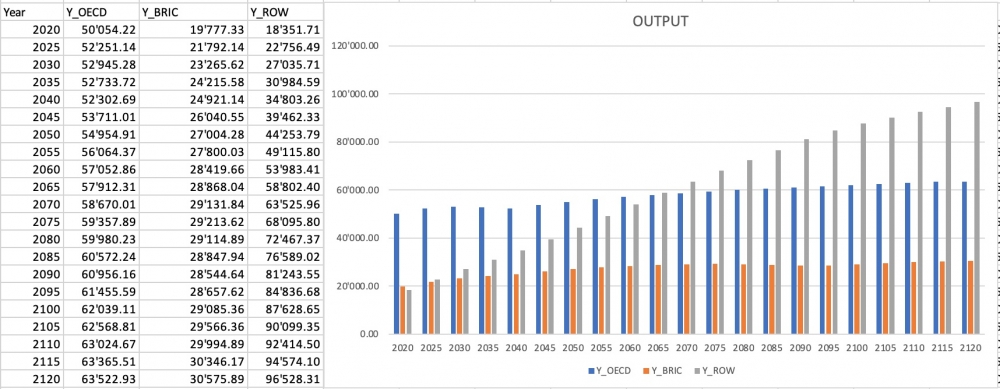
Impact on Welfare
Per capita consumption profiles are shown below. countries and the rest of the ROW world.
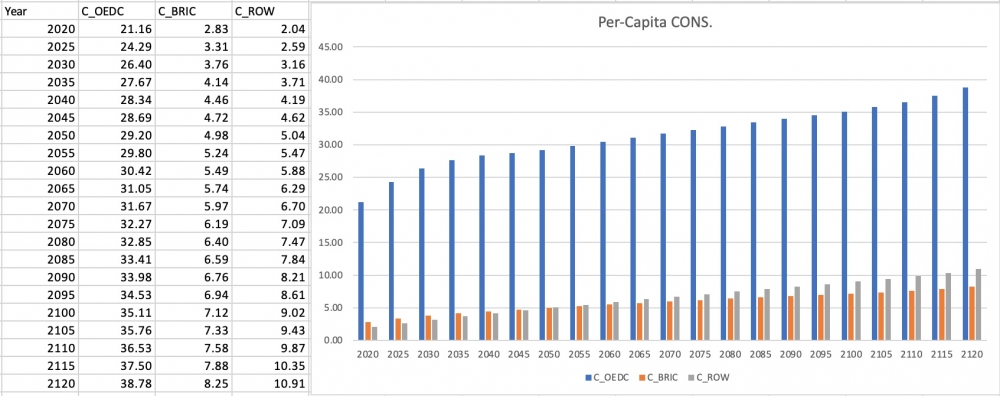
Emissions
For the sake of realism, we have assumed that GHG emissions could not fall by more than 15% per 5-year period. On the other hand, we have limited the possibility of storing captured CO2 to a quantity of 6 Gt per year.
Here, we observe a rapid decline in emissions to a level of around 12 Gt of CO2 per year in 2040, followed by a slight drop to 10 Gt per year in 2120.
Negative emissions resulting from CDR/DAC investment are shown here in red. From 2095 onwards, net emissions are around 4 Gt of CO2 per year.
The second chart shows the emissions reduction efforts of the 3 coalitions.
